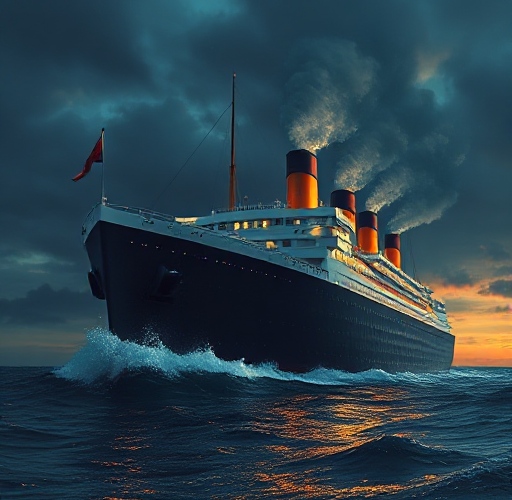But that’s not all. Poor communication was a real villain in this tale. On that fateful night, the Titanic received multiple iceberg warnings, yet the crew was either too rushed or too confident to heed them fully. It’s like ignoring a friend who warns you about a looming deadline—only to find yourself scrambling at the last minute.
And then there’s the question of lifeboats. The Titanic carried far fewer than needed, which seems almost absurd for a ship that was supposed to be the epitome of safety. Picture this: a concert hosting thousands, but only a handful of exits. It creates a recipe for chaos in times of trouble.
So, why did the Titanic sink? It wasn’t just one reason; it was a tangled web of poor design, human error, and sheer misfortune. Each element played its part in the tragic symphony that night, reminding us that even the grandest dreams can end in heartbreak.
The Events Leading to the Disaster
Take the example of the Titanic. It wasn’t just one massive iceberg that sealed its fate; it was a series of decisions—faulty communications, a rushed voyage, and the lack of sufficient lifeboats—each contributing to the eventual calamity. When you dig deeper into these events, you find a familiar pattern: pride, negligence, and sheer luck leading us down a dangerous path.
Ever notice how often we dismiss intuition? It’s like that gut feeling when you’re about to make a bad decision; it’s telling you to stop. But what happens when we ignore those signs? Look at the 2008 financial crisis. It started with a shaky foundation of risky mortgages and skyrocketing home prices. The problem was like a slow leak in a tire—barely noticeable until it’s too late. Policies were put in place that should have acted as a safeguard, but complacency set in, and one by one, the dominoes began to fall.
Impact of the Tragedy on Maritime Safety
Just like an unexpected storm can turn a sunny day at sea into chaos, maritime disasters can lead to stricter regulations and better training for crews. Think of the Titanic—its sinking was a monumental disaster that rocked the world. It pushed authorities to rethink safety protocols, making lifeboat requirements and crew training paramount. So, in a way, every tragedy is a lesson wrapped in heartbreak.
The reality is, every accident at sea echoes through the halls of maritime safety organizations. When a vessel encounters trouble, it’s not just the crew and passengers who feel the impact; entire industries can shift. Each incident sparks investigations, leading to innovations and safer practices. For instance, after the Costa Concordia tragedy, changes were made to improve evacuation procedures and enhance crew training. It’s a bit like tightening the nuts and bolts of a machine after it has broken down.
But the impact doesn’t stop at policies and procedures. It seeps into the mindset of sailors and shipping companies alike. The narrative of a tragedy reverberates, instilling a culture of safety where being risk-averse becomes the norm. Crew members are ever more aware that their decisions can mean the difference between life and death. Isn’t it fascinating how we can turn our darkest hours into beacons for safer tomorrows? Just as the lighthouse guides ships away from danger, lessons from tragedy illuminate the path ahead in maritime safety.
























Add comment